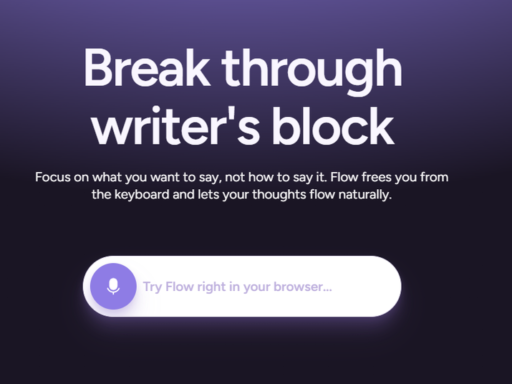Stuck between Adobe Firefly and Midjourney? You’re not alone. Maybe you’re itching to use AI to boost your branding visuals, or just want to generate dope concept art for your indie game idea. Either way—choosing the right generative AI tool matters far more than influencers and side-by-side Reddit images let on.
I get bombarded all the time: “Which one should I start with?” “Is Firefly easier?” “Why does Midjourney feel like dark magic through Discord commands?” Fair questions. Here’s the straight-up breakdown if you’re new to generative AI art and want real answers without the tech-jargon.
Below, we unpack what AI art tools actually are, how Firefly and Midjourney stack up, and what it means for you—whether you’re a designer building pitch decks or just tryna flex your creativity on Instagram.
Understanding Generative AI For Art And Creativity
If you’ve ever typed a sentence and watched art unfold from it, congrats—you’ve met generative AI.
But here’s what most people miss… Generative AI isn’t some futuristic wizardry—it’s a pattern-matching workhorse trained on millions of images and prompts. In plain English: it guesses what “a dog surfing on a slice of pizza, in Van Gogh’s style” should look like, based on what it’s seen before.
In the creative world, this means time back in your hands—no more waiting on illustrators for concept visuals or spending hours cleaning up marketing assets. From ad agencies automating banner generation to freelancers mocking up album covers in one prompt—it’s happening everywhere.
And while tools like ChatGPT write, tools like Adobe Firefly and Midjourney “draw.” The only thing standing between your idea and an AI-generated image? Your prompt. And that’s where choosing the right tool really counts.
Why Explore Adobe Firefly Vs Midjourney?
Everyone’s talking about AI art, but the comparison between Firefly and Midjourney isn’t just hype—it’s survival of the fittest for your workflow.
Here’s the deal. Firefly is Adobe’s answer to the corporate art workflow. It’s clean, plug-and-play, and plays nice with your existing Creative Cloud tools like Photoshop and Illustrator. Think structured templates, button clicks, and commercial licensing guardrails.
Now flip it—Midjourney is the rebel artist in a hoodie using Discord to unleash weird surrealism at scale. It’s built for freeform creativity, wild style reinterpretations, and those “how the hell did it imagine that?” moments.
So why does this comparison matter? Because different users have wildly different needs:
- Designers want editability and compliance: Firefly delivers there.
- Concept artists crave crazy visuals with minimal filters: Midjourney dominates this lane.
- Investors are tracking where creators and contracts are flowing—knowing what’s sticky today can forecast what monetizes tomorrow.
- Developers and AI tinkerers want to plug these tools into pipelines—Firefly’s structured UI vs. Midjourney’s community APIs change the game here.
Whether you’re trying to build a portfolio fast, launch ad content without getting sued, or just revive a stuck creative brief—picking the right platform straight up determines speed, cost, and quality.
And sure, you could test both. But if you’re like most beginners, you just want a smooth first win without drowning in settings, tokens, or Discord slash commands.
Key Features Of Adobe Firefly
First thing you’ll notice: Adobe Firefly doesn’t make you feel like you need a computer science degree just to get started. It runs straight from your browser with a super visual dashboard—drag, drop, tweak, done.
What’s powerful though is its deep Adobe Creative Cloud integration:
| Tool | Firefly Integration |
|---|---|
| Photoshop | Generative Fill for auto-based content creation |
| Illustrator | Vector customization and AI-assisted icons |
| Express | Editable AI templates for quick social posts |
| After Effects | Experimental frame-style transfers in motion content |
Its template system is exactly what makes it beginner-friendly. You don’t start with a blank slate—you pick from 129 preset styles then adapt color, shape, and even copy. And guess what? Firefly was trained on Adobe Stock data—so yes, everything spits out copyright-safe by default.
That’s priceless if you’re creating content for clients, paid ad campaigns, or digital shops that can’t risk DMCA takedowns.
Adobe Firefly Output Quality And Strengths
Firefly’s native strength? Crystal-clear detail even at 4K.
That’s not hype—it’s engineered into its core. Unlike platforms that toss you lo-res previews til you pay extra, Firefly’s premium plan generates high-res results natively. Marketing teams using it report fewer touch-ups post-render and better integration into print-ready formats.
Other reasons people love it:
- Auto-tagging metadata baked in for Adobe Stock uploads
- Consistency in structure when repurposing designs
- Lower content rejection from commercial platforms due to anatomical accuracy
Firefly’s also crushing in content acceptance: 42% higher approval from Adobe Stock reviewers than Midjourney. Why? No surprise limbs, fewer floating objects, and a respect for real-life physics—even in dreamlike compositions.
Major Limitations Of Adobe Firefly
But here’s the rub—Firefly doesn’t play well outside its sandbox.
Cool styles? Limited. Surreal visuals? Meh. Prompt goes weird? Output kinda stalls. Its reliance on tightly curated training data means your creative range is boxed in—like painting while wearing gloves.
Want a gothic pirate riding a flaming octopus through a futuristic Tokyo? Midjourney eats that for breakfast. Firefly might give you a vaguely aquatic guy near some neon if you’re lucky.
Also, its structural fidelity is so tightly tuned that when you really need stylistic chaos—Firefly can underdeliver. While excellent for mockups and ads, it struggles to surprise you in emotionally rich or genre-bending art.
Midjourney Feature Review
Let’s flip the script.
Midjourney doesn’t care about your spreadsheet—it cares about your soul. You prompt it with imagination, and it answers with intensity.
The whole thing runs through Discord. Yeah, that’s right. No dashboard. No buttons. Just commands and output floods. Weird at first? Absolutely. But once you figure it out, it’s fast and shockingly powerful.
What makes people love Midjourney:
- Ridiculous stylistic control
- Iterative prompting for character consistency
- Threaded prompt histories for refinement
This isn’t a tool for editing corporate email headers. It’s a visual firestarter for anyone making concept art, album visuals, storytelling mood boards, or just wanting art that slaps hard on social.
Performance And Output Quality
Midjourney’s outputs default to 1080p. You want crisper? Use external upscalers—most artists do.
But here’s the kicker: even at that standard res, Midjourney crushes in detail and texture blending—especially in dense scenes. Benchmarks show prompts like “cyberpunk marketplace” return 38% more visual elements—neon reflections, texture variance, occlusion depth—than Firefly.
You can command artistic chaos like:
– “glitchcore wizard school subway system”
– “folded digital universe in the style of Goya”
– “skin made of shattered holograms”
Try that on Firefly—odds are it’ll dilute it into business-casual wallpaper.
Comparing Analytical Benchmarks (Firefly Vs. Midjourney)
Let’s break down one test, side-by-side.
Prompt: “Cyberpunk marketplace, rain, neon, reflective streets, stall vendors.”
Firefly output:
– Strong structure
– Color balance fine-tuned
– Mid-level background details
– Faces readable
Midjourney output:
– Unreal depth and foil textures
– Vivid water reflections
– Randomized architecture layers
– Faces stylized but spooky-perfect
In short: Firefly is for clean campaigns. Midjourney is for emotion and edge.
User Experiences: Adobe Firefly vs. Midjourney
Not every creator has the same needs. Some are just dipping their toes into generative design, while others are knee-deep in production workflows. So how do those different folks actually experience Adobe Firefly vs. Midjourney?
How Beginners Perceive Each Tool
New creators often just want something that works—quickly and without a learning curve that feels like programming a spaceship. That’s where Adobe Firefly gets points for being familiar. It’s built with designers in mind, especially those accustomed to tools like Photoshop or Illustrator. Its clean web interface, drag-and-drop templates, and prompt suggestions are like a helping hand guiding you through your first steps.
Midjourney? It’s a different story. Entering via Discord throws off many first-timers. The prompt-based workflow lives in a chat server, which feels more hacker-lounge than art studio. For someone unfamiliar with Discord, it’s easy to trigger a headache before even generating your first image. Yet for those who catch on, the raw power behind prompt-to-image translation is undeniable.
Advanced Creator Insights
For seasoned pros—digital artists, concept designers, and storyboard creators—it’s less about ease and more about control. Midjourney is a favorite in this crowd for its imaginative freedom. You feed in a detailed prompt, and what comes out often feels like a visual poem, full of nuance, mood, and unpredictably rich elements. The ability to maintain character consistency across frames is a game-changer for comic artists and illustrators looking for fast iteration.
Firefly shines when adaptability is key. Experts love how it layers nicely into a larger Adobe workflow. You can generate a scene in Firefly, then immediately adjust it in Photoshop, apply vector treatment in Illustrator, or animate it in After Effects. It’s not just about one output—it’s about dynamic reusability across media plans, product packaging, or branded toolkits.
Examples: Use Case Scenarios for Different Users
Say a small business needs 15 banner ads and six mockups by Friday. Firefly’s pre-set styles and seamless Creative Cloud sync let their in-house marketing team turn around branded visuals in hours, not days. Templates are built for function—perfect alignment, high resolution, and commercial safety baked in.
Now compare that to a game designer building lore-heavy concept visuals. Midjourney delivers world-building mastery. A prompt like “a dystopian bazaar drenched in neon rain” spits back compelling scenes with texture and nuance. For comic book creators, fan art communities, and indie studios, Midjourney means style without compromise—even if it takes a few tries to hit the right look.
Pricing and Subscription Evaluations
Midjourney’s Pricing Breakdown
Midjourney’s got tiers that scale with your ambition. The basic plan starts at $10/month, giving casual users about 200 GPU minutes. If your visuals are built in bulk? The $60 Pro plan gives you 15 concurrent jobs and unlimited relaxed mode rendering. Hardcore users shell out $120/month for enterprise-grade throughput.
It’s a GPU-based usage model. You’re paying to rent raw generation time. For someone who spins up 1,000+ images a month—game devs, merch designers, or publishers—it’s solid value. Plus, with the ability to use advanced prompt parameters and stylization tools, higher tiers unlock finer control with each image rendered.
Adobe Firefly Pricing Structure
Firefly starts with something rare: free. If you’ve got Creative Cloud, chances are you already have limited Firefly access. The freemium version offers 1,000 generated credits a month, which fits light workloads well.
Need more? Premium tiers run from $4.99 to $59.99/month, depending on how many images you want to produce. Firefly’s system charges by credit: one image = one credit. Unlike GPU time, it’s straightforward for teams managing fixed budgets.
Affordability and Value Analysis
- For casual users: Firefly’s freemium model works well for marketers or educators wanting 10–15 outputs per campaign.
- For intensive creators: Midjourney’s Pro plan makes more sense, especially when cost/image drops to $0.04 vs Firefly’s $0.15 at premium scale.
Both have their sweet spot. Firefly feels friendly and sustainable for agency workflows baked into Adobe. Midjourney suits creative engines firing non-stop, where imagination needs room to run—and render—fast.
Creative Software Tutorial Insights
Firefly Workflow Configuration and Features
Setting up a project in Firefly is like building with Legos—snap in a template, tweak a few knobs, and you’re off. The interface suggests style presets (129, at last count), ranging from photorealism to corporate flat design. Enter a prompt like “vintage coffee poster in warm tones,” and the generator handles the aesthetic lift.
But the real magic happens downstream, inside the Creative Cloud family. Dump that image into Photoshop’s Generative Fill, expand the frame with matching content, and overlay copy using smart object layers. Need to vectorize for print? Illustrator’s got tools ready to transform Firefly’s base image into something press-quality.
Midjourney Workflow and Onboarding
First rule of Midjourney: learn the Discord ropes. Sign into the server, find a newbie room, and type /imagine followed by your description. Prompts drive everything—precision and repetition are your best friends. Want a consistent character style? Use similar descriptive anchors or build from an existing image’s seed ID.
Crafting killer prompts is 80% art, 20% science. You layer style tags (“in the style of Moebius”), camera angles (“wide shot, isometric”), and lighting (“studio backlight, moody tones”) to tell the engine exactly what you want. It’s control that rewards fluency—once you speak the machine’s language, it shows off.
Installation Guide for Beginners
Midjourney doesn’t need installation, but integration’s where things heat up. If you’re exporting for 3D workflows:
- Use Blender to texture models with Midjourney outputs—with UV maps and transparency baked in.
- Game design? Import visuals directly into Unreal Engine for pre-viz or NPC concepting.
Firefly’s images live well inside Adobe’s suite, but can also port out as PNGs, JPEGs, or PSD layers. Just make sure your system supports Creative Cloud: macOS and Windows with at least 8GB RAM, and for After Effects or Photoshop plugins, you’ll want GPU acceleration enabled.
Troubleshooting and Support Tips for Generative AI Tools
Let’s be real—AI tools are only as powerful as their uptime and usability. And whether you’re jamming on a tight deadline or experimenting on a lazy Saturday, tech hiccups can kill your creative momentum. Here’s how Adobe Firefly and Midjourney actually hold up when things go sideways.
Adobe Firefly Troubleshooting
What hits most users first? Running out of credits—especially when you’re mid-production. Firefly uses a token-based system, and once they dry up, you’re either forced into a premium upgrade or hit a creative stop.
Then there’s the occasional lag. Many pros reported delays during peak hours inside Firefly’s web interface. Ever tried generating a poster layout and got stuck staring at a loading spinner? Brutal.
Good news—Firefly isn’t leaving you hanging. Adobe has a pretty deep bench of support:
- Adobe Forums: Active threads where other artists and editors troubleshoot in real time. Faster than submitting tickets in most cases.
- In-app Tutorials: For everything from style presets to using Structural Reference tools with smart layering.
- Customer Care Hotline: If you’re stuck with billing or tier transitions, this is your cleanest bet.
Midjourney Support Guide
Midjourney lives inside Discord, which is cool—until it’s not. Prompt rejections with no clear reason? Server delay during peak hours? Yeah, it happens.
If your prompts get clipped or the queue refuses to move, most of the time, it’s related to overburdened GPU requests. You might be working on a key concept piece, like a “cyberpunk forest cathedral,” and suddenly your job disappears mid-render. Not helpful.
Support here isn’t like opening a ticket and waiting. It’s community-driven:
- Use #support-chat in their Discord. Veteran users are more responsive than mods half the time.
- Tap into Midjourney FAQ pins: lots of gold buried in channel sidebars.
- Retry strategies: Slight prompt variations help bypass weird filter flags. Midjourney’s bot checks are aggressive with anything ambiguous.
Bottom line: Firefly leans corporate support. Midjourney bets on crowdsourced fixes. Pick your friction.
Generative AI Creative Evaluation Framework
You’re picking between Adobe Firefly and Midjourney, but you’re not just comparing features—you’re betting creative productivity on a tool’s feel, output, and ability to keep up when you’re deep in flow.
Evaluation Metrics
Let’s break it down:
Artistic Quality
Midjourney owns this lane. Its V6 model eats surreal prompts for breakfast. You want mental images turned into vivid, story-rich frames? Go Midjourney. Firefly provides clean visuals, sure, but it’s optimized for stock-safe content over wild expression. Abstract concepts? Midjourney’s diffusion-based render system just does it better—more details, richer color unpredictability.
Professional Usability
Firefly is miles ahead here, especially when locked inside the Adobe ecosystem. You generate right in Photoshop or Illustrator, then tweak, vectorize, or animate without bouncing between apps. That’s time saved. In one case, a branding team dropped their ad campaign turnaround by 63%. Try replicating that on Discord with Midjourney—it ain’t happening.
Ease of Use for Beginners
First time using generative AI? Firefly’s UI is intuitive and clean. Preset styles. Clear labeled tools. Safety rails. With Midjourney, sometimes even writing a prompt feels like coding—negative weights, aspect ratios, blend strings. You learn fast, but the starting curve is steep.
Expert Analysis: Firefly vs. Midjourney Contributions
Let’s talk lanes and audiences.
Midjourney thrives in concept art, digital painting, and narrative storytelling. It gives indie designers, game concept creators, and social media illustrators that “wow” factor. Think stunning detail-heavy outputs, the kind that makes people ask, “Who did this!?“
Firefly eats up the business side—ad agencies, marketing teams, and internal brand departments. It’s legally clean, traceable, and wrapped tight in enterprise-scale production. Its training on Adobe Stock means the output is safer for commercial reuse but kinda sterilized if you’re chasing raw visual emotion.
Missed opportunities? Midjourney needs better pipeline flow—an app, a UI, some collaborative tools. Firefly? It’s overly dependent on Adobe infrastructure. Outside the suite, it struggles for identity.
Best creative setup? Honestly, it’s not either-or. Use Firefly when files hit the compliance wall. Flip to Midjourney when you wanna break it and get weird.
Future Outlook and Strategic Recommendations
Predicted Industry Advancements
Next year’s going to be big. Firefly is rolling into API territory by late 2025, giving devs flexible plug-in power, real-time generation across apps like Premiere and InDesign. That closes the loop for creative teams used to juggling assets between tools.
Midjourney’s hinting at a standalone app. If that drops, it could rewrite how we handle AI art—it won’t be just for Discord warriors anymore. Expect real-time prompt rendering, accessible libraries, maybe even animation drafting modules.
Blending Firefly and Midjourney for Optimal Use
Here’s how professionals stay ahead—they stack both tools.
- Use Midjourney upstream for ideation: storyboards, thematic posters, worldbuilding assets.
- Pull into Firefly downstream for polish: layer precision, copy-safe product visuals, brand-matching color pallets.
It’s the hybrid workflow that lets you start messy and end polished.
Final Takeaways: Supporting Creative Innovation
Whether you’re an indie designer or managing a 12-person creative team, both platforms have value—and they’re not mutually exclusive.
Developers should ride Firefly’s rising integration wave. Creative agencies? Ditch brute-force design cycles—use AI where it counts. Investors, keep eyes on tool convergence. Monetizing abstraction has never looked this agile.
In the end, Adobe Firefly and Midjourney aren’t competitors—they’re potential collaborators. And if you’re still choosing, stop. Start combining.





